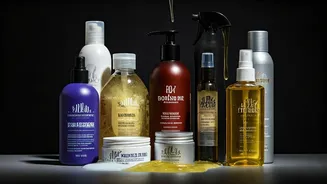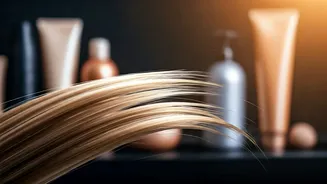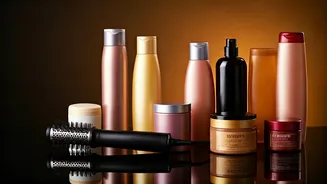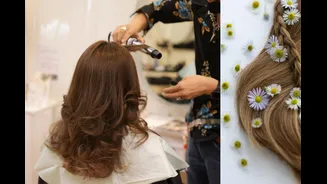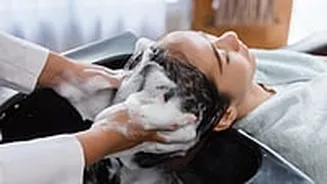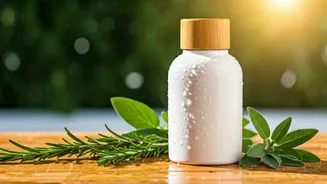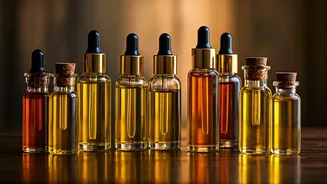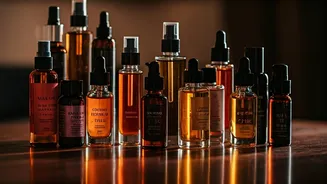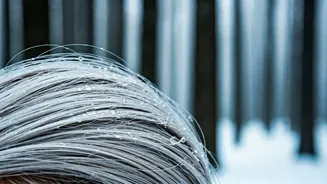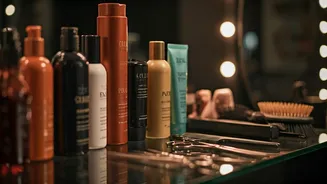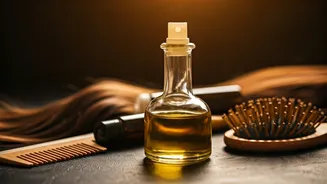Shampoo and Conditioner
The cornerstone of any hair care routine is shampoo and conditioner, yet even these basics can be misused. Using a shampoo that strips the hair of its
natural oils, followed by a conditioner that doesn't adequately replenish moisture, creates an imbalance. This can lead to dry, brittle hair prone to breakage. For example, a harsh sulfate-containing shampoo coupled with a silicone-heavy conditioner might provide initial smoothness but ultimately causes build-up and damage over time. Consider the porosity of your hair. Fine, low-porosity hair needs lightweight formulas, while coarse, high-porosity hair craves richer, more emollient options. Always choose products that complement each other, offering balanced cleansing and conditioning for optimal hair health. Selecting the right duo is crucial for maintaining the hair's natural balance and promoting overall vitality.
Heat Protectant & Oils
Heat styling tools like curling irons and straighteners can wreak havoc on your hair. While heat protectants are designed to shield strands from damage, combining them incorrectly with styling oils is a common mistake. Applying a heavy oil-based product before heat styling can trap heat, leading to significant damage. The oil conducts heat more effectively, causing hair to become fried. Instead, allow the heat protectant to fully absorb into your hair before applying any styling oils. Choose a heat protectant that offers a lightweight, non-greasy formula, and consider applying the oil afterward to add shine and smoothness. If your hair is naturally oily, consider skipping the oil altogether, as the combination could make your hair look greasy, and weigh it down. Pay attention to how your hair reacts to each product individually to achieve the best results.
Styling Products Mix
Layering multiple styling products without proper knowledge of their compatibility can be a recipe for disaster. Mixing products with different bases, such as water-based and oil-based formulations, can lead to uneven distribution and product build-up. This can result in a sticky, weighed-down appearance. For example, applying a gel with a high alcohol content over a leave-in conditioner with silicone can cause the hair to dry out or become dull. Start with a small amount of each product and observe how your hair responds. If using multiple products, ensure they are designed to work together. Many brands offer complete styling systems for this reason. Avoid mixing products with opposing effects, such as a volumizing mousse with a smoothing serum. Understanding the ingredients and intended effects of each product is essential to prevent unwanted build-up and achieve the desired style without compromising the health of the hair.
Protein & Moisture Overload
Protein and moisture are essential for healthy hair, but too much of either can be detrimental. Overusing protein-rich treatments can lead to brittle, easily broken hair, particularly for those with low-porosity hair. On the other hand, too much moisture without sufficient protein can make the hair limp and lifeless. It’s about finding the right balance. Recognizing the signs of protein overload (stiffness, breakage) or moisture overload (limpness, lack of structure) is crucial. Incorporate a clarifying shampoo to remove excess buildup and a deep conditioner to replenish moisture. Pay attention to your hair's needs and adjust your routine accordingly. Protein treatments are best used sparingly, while moisture-rich masks can be used more frequently. Balance is key to maintaining healthy, resilient, and beautifully styled hair. Consider incorporating these treatments into your routine bi-weekly or monthly, rather than daily.
Dry Shampoo & Build-Up
Dry shampoo has become a staple for many, but overuse can cause significant damage. Excessive use of dry shampoo can lead to a build-up of product on the scalp and hair, clogging hair follicles, and potentially causing hair loss or thinning. Additionally, the buildup can cause the hair to look dull, lifeless, and feel rough. If you regularly use dry shampoo, be sure to incorporate a clarifying shampoo into your routine to thoroughly cleanse the scalp and remove residue. Opt for dry shampoos with minimal alcohol content and ingredients that won't contribute to build-up. A good rule of thumb is to use dry shampoo sparingly and not as a replacement for regular washing. Watch out for signs of build-up, such as itchiness, flaking, or a persistent feeling of heaviness on the scalp. Always prioritize thorough cleansing to maintain a healthy scalp and promote hair growth.
